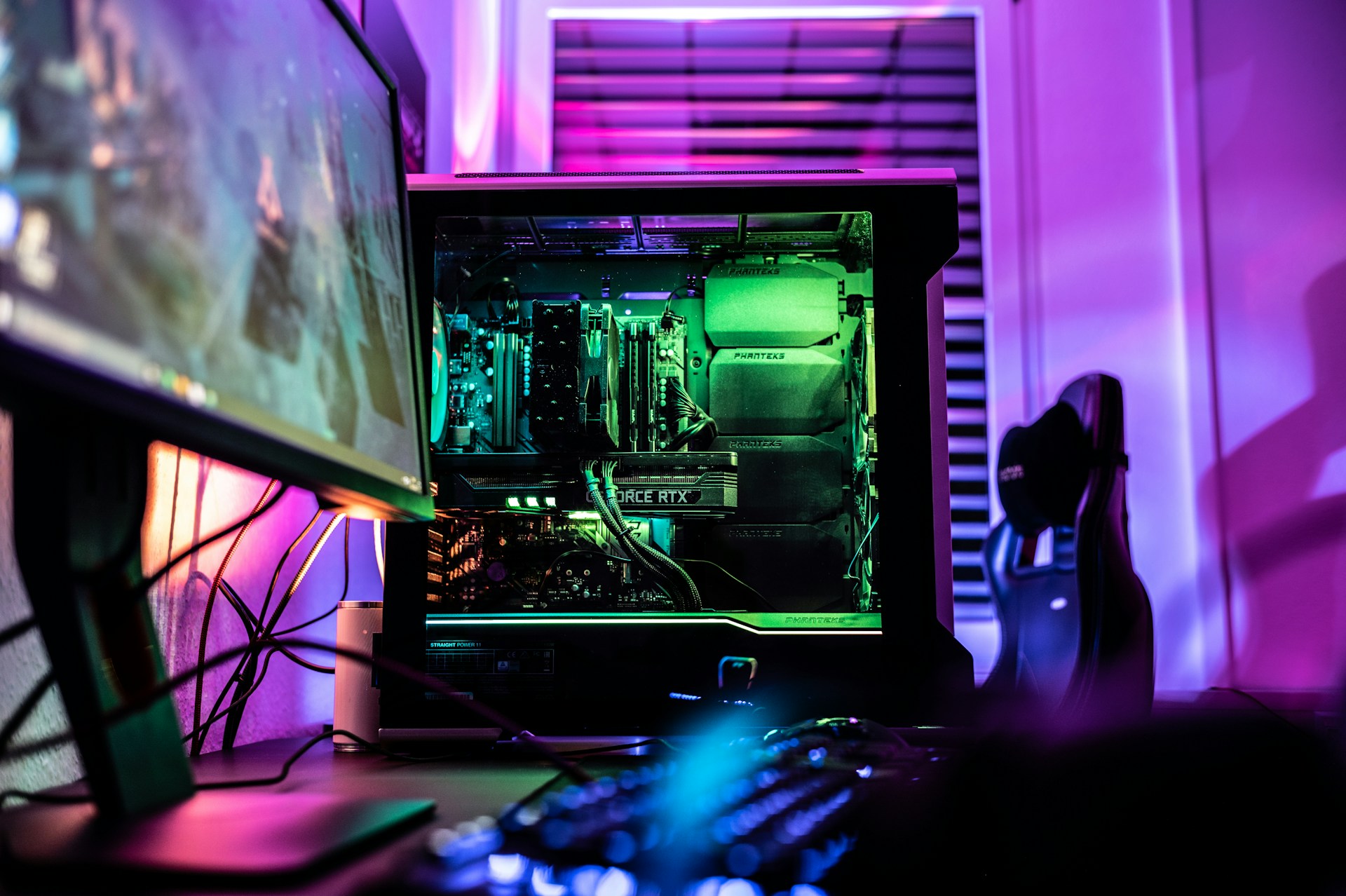Having a laptop battery not charging can make anyone’s heart sink into their stomach. Chargers are difficult — sometimes impossible — to replace, and most people don’t want to go all the way to tech support to resolve an issue. Try fixing your laptop issues at home before assuming the worst.
Reasons Why Your Laptop Battery Is Not Charging
Remain positive when your laptop doesn’t charge at first. Jumping to conclusions will only hurt your chances of solving your laptop battery not charging issue. Check out these reasons why your laptop might not be charging. Then, you can work toward solving the problem.
1. It’s Not Plugged In
Many people think they’ve plugged something in, but it isn’t. This user error is quick to fix. Just make sure your charger is plugged into both the wall outlet and your laptop.
2. It Might Be Fraying
People purchase new phone chargers when theirs begin to fray or have to be held a certain way to charge their phones. Your laptop charger is more expensive, so, understandably, you’d try to get the most bang for your buck. Don’t let it fray too much, and when you’re not using your charging cord, you can store it away neatly so it doesn’t tangle, and nobody accidentally destroys it further.
3. Your Device Is Too Hot
Overheating can negatively affect most appliances, even rendering them unusable after prolonged use. When your computer overheats, it may not respond well to any attempts to charge it. Let your device cool down, then try again later.
4. You’re Using the Wrong Port
Sometimes, people’s brains go on autopilot, and everyday tasks become automatic. When you plug in your computer, you may reach for the charging port and miss it entirely. Take a moment to ensure that your charger is plugged into the correct place before assuming that something’s wrong and the reason for your laptop battery not charging.
5. Your Port Is Damaged
Check the area your charger plugs into. You may find that the port is damaged or excessively worn. In this case, you’ll want to find someone to repair the port or maybe trade in your laptop for a newer model if you feel that it’s time for an upgrade. Make sure to treat your ports with care, and never force a charger or any other device into your computer.
How to Rectify Your Laptop Battery Not Charging
Your laptop not charging is a huge issue, whether it’s caused by one of the problems above or something different entirely. Follow these guidelines to solve any issues with your laptop battery not charging.
1. Make Sure It’s Fully Plugged In
This solution sounds simple, but devices are pickier than you’d think. Your laptop might be particular about how well the charger is plugged in. First, make sure the end of it fits snugly in your computer’s charging port. Then, ensure it’s plugged into the wall securely. Once you know it’s satisfactory on both ends, check the power bank — sometimes, the cord comes slightly unplugged while still hanging onto it, and your computer may not like that. If you find anything amiss, plug it back in. Your laptop should continue to charge afterward.
2. Look for Any Breaks
Chargers aren’t always taken care of as well as they should be. You might have mistreated your charger by bending it in several places or allowing it to break to the point that the cords inside the casing are now exposed to the air. These breaks aren’t always easy to identify, as they might be on spots you don’t see very often. Make sure to look over your charger carefully. Even a small hole could cause issues with your charging cord. If you find any breaks, try to patch them up with electrical tape, which can bend and expand for every way you need to turn your cord. If it’s something that can’t be patched up, you may have to purchase a new cable.
3. Let Your Laptop Cool Down
When your laptop overheats, it doesn’t work to its optimal capabilities. Overheating laptops may see reduced battery time or even become unusable if it stays overheated regularly. This intense heat can harm your computer’s battery, so when your laptop starts overheating, take it seriously. Otherwise, you might find your laptop battery not charging because the heat might alter your battery sensor. In that case, the best thing to do is allow your computer time to cool down.
You may need a new battery if your computer has fried your old one. The best way to avoid this occurrence is to prevent it from happening. Make sure to clean out your computer’s air vents regularly because grime and dirt of all kinds can affect how your fan performs, thus affecting how hot your laptop can be.
You may need to cut down on the number of applications you have open. Closing applications and potentially shutting down your computer for a bit can give it time to rest and cool down. Otherwise, you may want to invest in a cooling mat or desktop fan to mitigate the harm that comes from overheating.
4. Check Your Settings
Some laptop settings could affect how your battery is displayed or functions. Your settings could have changed due to a recent update, so it’s worth it to check on them again. You might have altered some settings to a certain way that could confuse your computer, but resetting everything to default should fix any issues. With the default settings on, your computer should signal to the battery that it’s time to start charging again. If this quick fix doesn’t work, you may have to look at other solutions — the issue could be internal.
5. Update Your Drivers
Drivers are something that every piece of hardware runs off of. They offer instructions for how something is supposed to work and can keep all the gears in your computer turning smoothly. Drivers should automatically update your hardware whenever they see that an update is available. Still, it can’t hurt to check on them and make sure your drivers are up-to-date.
To access your list of drivers, navigate to your computer’s search bar and search for “device manager.” Once there, you should see a list of your hardware devices. You may have to check each listing individually, but it should tell you whether those hardware pieces require an update. Search for “AC Adapter” or whatever else your laptop charger might be called. If it needs an update, manually install it. Hopefully, doing so will alleviate any issues.
6. Remove the Battery
If nothing else seems to work, you may have to remove the battery from your laptop. Make sure it’s powered off, then remove it. Make sure nothing is obstructing the power source — maybe specks of dust could have gotten in and messed with the way your computer read the charger and battery.
Before putting your battery back in, try plugging in your laptop and turning the power on. If your computer works, you know that the issue lies in the battery or some other hardware. If it doesn’t work, you can assume the charging cord itself is at fault.
7. Go to Tech Support
If you’ve tried everything possible and still can’t identify the issue, it’s time to go to the professionals. Find tech support, whether it’s nearby or online from the comfort of your home, that can help you work through the issue. It’s helpful to know your computer’s specs in case the tech gurus ask.
Going to tech support doesn’t always ensure that you’ll have an answer or a solution you can implement. Sometimes, you might leave as confused as you walked in. When tech support can’t help you, you may only have one solution left to explore.
8. Replace the Charger
Laptop chargers can be pricey. Still, if you have no other option, you need to buy a new one to ensure your computer will charge. Try to find a charging cord that matches what your computer needs. If you search in a physical store, make sure to take photos of your previous cable and maybe your computer’s charging port, so you know what to look for.
When to Replace Your Laptop Charger Cord
You may not want to invest in a new charger, but when your laptop battery is not charging. Of course, there are times when you should replace your charger instead of trying to fix it.
1. When the Cord Is Broken
Maybe the cord is still broken despite your numerous attempts to patch it up with electrical tape. You’ll know that it’s time to replace your charging cable when you have to hold it in different angles to get it to charge correctly. Though a charger might be a significant expense, it’s worth saving yourself the effort of wrestling with your charging cable every day.
2. When Everything Else Functions Fine
If your computer isn’t overheating, and your settings all seem normal, you may start to wonder where the issue comes from. In that case, it may not be an internal issue and, ultimately, an issue with the cord. If you still can’t pinpoint any problems with the cable, it may just be time to seek out a replacement.
3. When You Just Can’t Figure It Out
Sometimes, spending a little money to get a new charger that fits your computer perfectly is worth the frustration it’ll save you. You might spend hours trying to identify the issue, so if that’s the case, it’s worth it just to purchase a new one.
Work Past Your Laptop Battery Not Charging
Sometimes, your laptop stops charging when you need it to charge most. Remember to foster a healthy battery life by not leaving your computer plugged in all the time and instead using your laptop around your home, away from its home. When dealing with your laptop battery not charging, the best thing is to keep a level head and try as many solutions as possible before assuming it’s unusable.
Recent Stories
Follow Us On
Get the latest tech stories and news in seconds!
Sign up for our newsletter below to receive updates about technology trends














